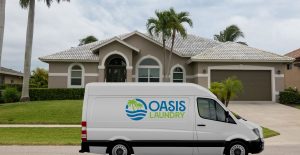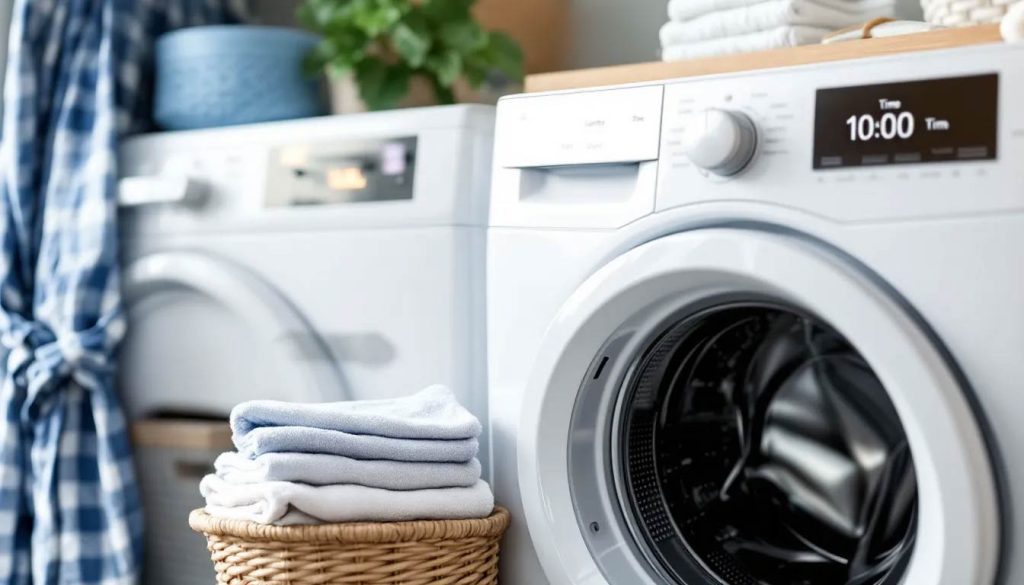Starting a wash and fold business from home offers an excellent opportunity for entrepreneurs seeking flexible income with minimal startup costs. The home-based laundry industry has grown 15% annually since 2020, driven by busy professionals and families needing convenient services.
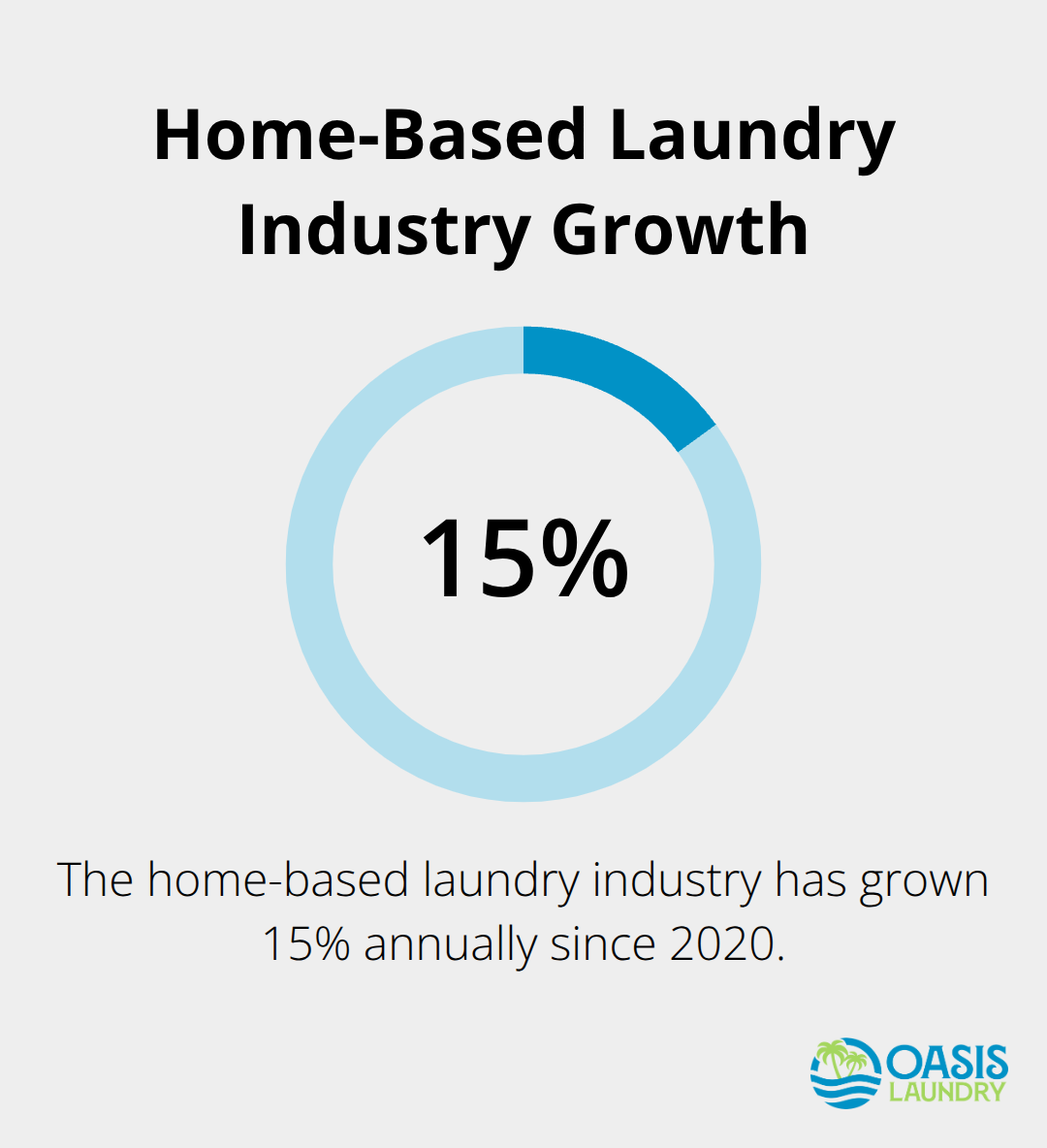
We at Oasis Laundry understand the potential this business model holds. With proper planning, legal compliance, and smart marketing, you can build a profitable operation right from your residence.
What Legal Steps Must You Take?
Your home-based wash and fold business requires navigation through three critical legal areas that determine whether you can operate legally and profitably. First, obtain your city business permit through your local municipal office, which typically costs $50-200 annually and requires renewal each year. Apply for a Federal Tax ID through the IRS if you plan to hire employees or operate as an LLC or corporation. Register a fictitious business name if your business name differs from your legal name, which costs around $10-50 in most states.
Business Permits and Registration Requirements
Purchase general liability insurance immediately, as this protects you from potential claims related to damaged or lost customer items. Commercial property insurance costs approximately $500-1,200 annually but shields your equipment and business assets from theft, fire, or water damage. Most states require annual permit renewals (typically due in January), so mark these dates on your calendar to avoid penalties or business interruptions.
Zoning Compliance and Home Operation Rules
Contact your local zoning office to verify that residential laundry services receive permission in your neighborhood, as many areas restrict commercial activities in residential zones. Most jurisdictions allow home-based businesses that serve fewer than 10 customers daily, but some require special permits for water-intensive operations. Install proper drainage systems to handle increased water usage, as many areas mandate commercial-grade plumbing for laundry businesses. Check with your homeowners association about any restrictions on commercial vehicles or signage, since many HOAs prohibit business operations that increase neighborhood traffic.
Insurance Protection and Risk Management
Secure business insurance coverage that includes product liability, professional liability, and business interruption protection. State Farm and Allstate offer specialized home-based business policies that start at $300 annually. Workers compensation insurance becomes mandatory once you hire your first employee, with small businesses paying about $45 monthly or $540 annually. Create a comprehensive waiver system for customers to sign, clearly outlining your policies for damaged, lost, or shrunk items. Document all customer interactions and maintain detailed records of pickup and delivery times to protect against potential disputes.
With your legal foundation secure, you can focus on the physical requirements that will transform your home space into an efficient laundry operation.
What Equipment and Space Do You Need?
Your home-based wash and fold business requires commercial-grade equipment that can handle high-volume daily operations without breaking down. Skip residential washers and dryers completely, as they cannot withstand the volume and will fail within six months of heavy use. Speed Queen commercial front-load washers cost $1,200-1,800 each and process 22-pound loads in 32 minutes, while their match dryers run $1,000-1,400 and complete cycles in 28 minutes. Purchase at least two washers and two dryers to maintain continuous operation and prevent bottlenecks during peak hours.
Commercial Equipment Investment and Finance Options
Continental Girbau and Huebsch offer finance programs with competitive rates for qualified buyers, which spread equipment costs over extended terms with flexible monthly payments. Avoid lease agreements, as purchase builds equity and reduces long-term costs by 40%. Install 220V electrical outlets for dryers and upgrade your electrical panel to handle 60-amp service, which typically costs $800-1,200 through a licensed electrician. Water usage will increase to 1,500-2,000 gallons monthly (verify your municipal water system can handle this volume without pressure drops that affect machine performance).
Space Configuration and Workflow Setup
Dedicate 150-200 square feet for your operation, which includes 8 feet of fold space and storage for 50 bags of clean laundry. Position machines along exterior walls near existing plumb to minimize installation costs, which average $2,000-3,500 for proper drain and hot water connections. Install commercial-grade ventilation that moves 200 cubic feet of air per minute to prevent moisture buildup that damages walls and creates mold problems.
Total Investment and Startup Costs
Your total startup investment ranges from $15,000-25,000 (this includes equipment, electrical upgrades, plumb modifications, and initial supplies like industrial detergent and storage shelves). Factor in monthly utility increases of $200-400 for electricity and water usage. Budget an additional $500-800 for professional installation and equipment setup to avoid warranty voids and safety issues.
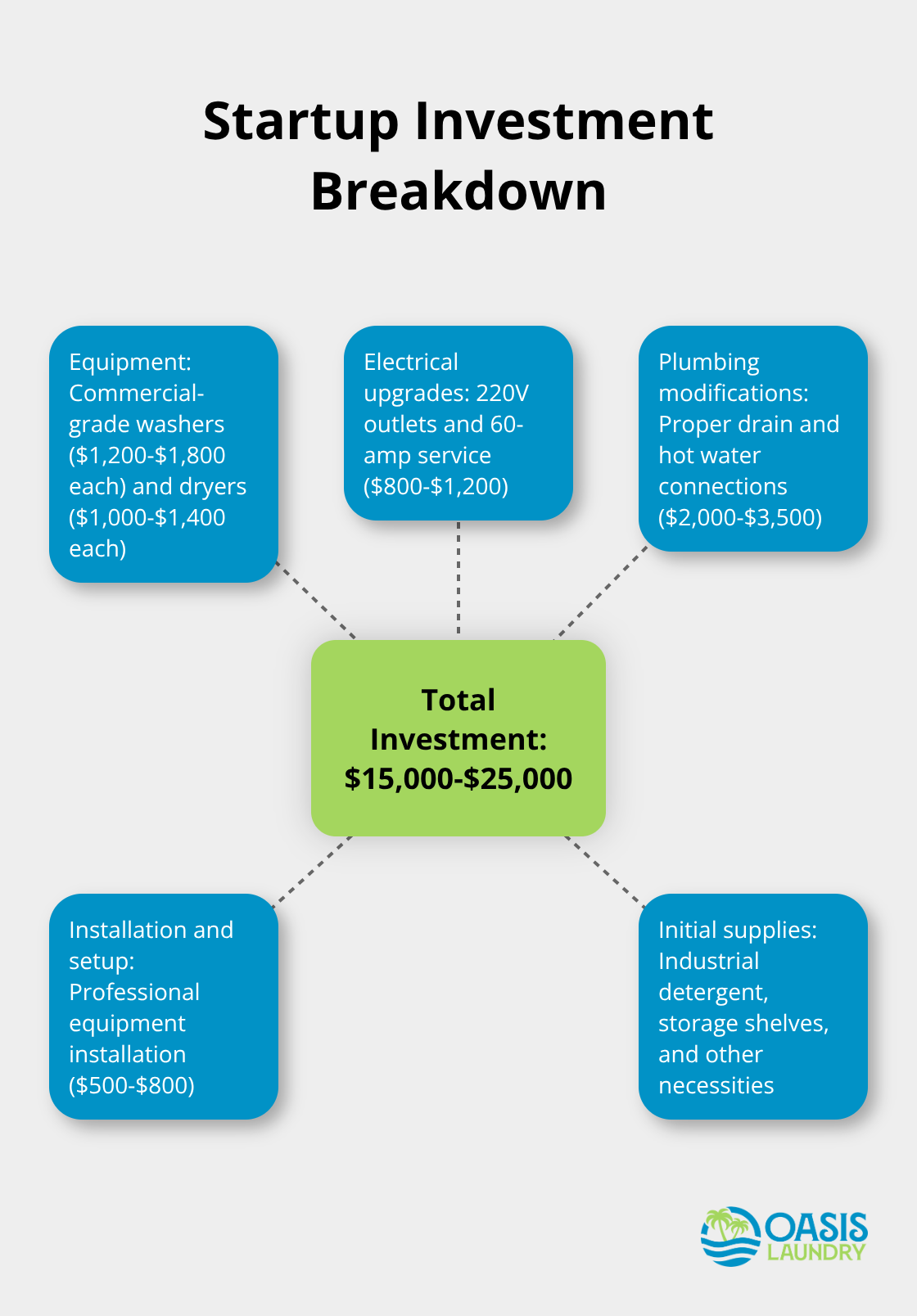
With your physical infrastructure in place, you need effective strategies to attract customers and build a sustainable client base in your local market.
How Do You Find and Keep Customers
Your success depends on three specific customer segments that generate consistent revenue in home-based laundry operations. Busy professionals represent the most lucrative target market for laundry businesses, as they work long hours, have demanding careers, and view laundry services as essential time-savers. Young families with children under 12 create steady weekly volume and average 15-20 pounds per pickup according to industry data from the American Cleaning Institute. Senior citizens over 65 often struggle with heavy laundry loads and appreciate reliable pickup services, though they typically request lighter loads that average 8-12 pounds per service.
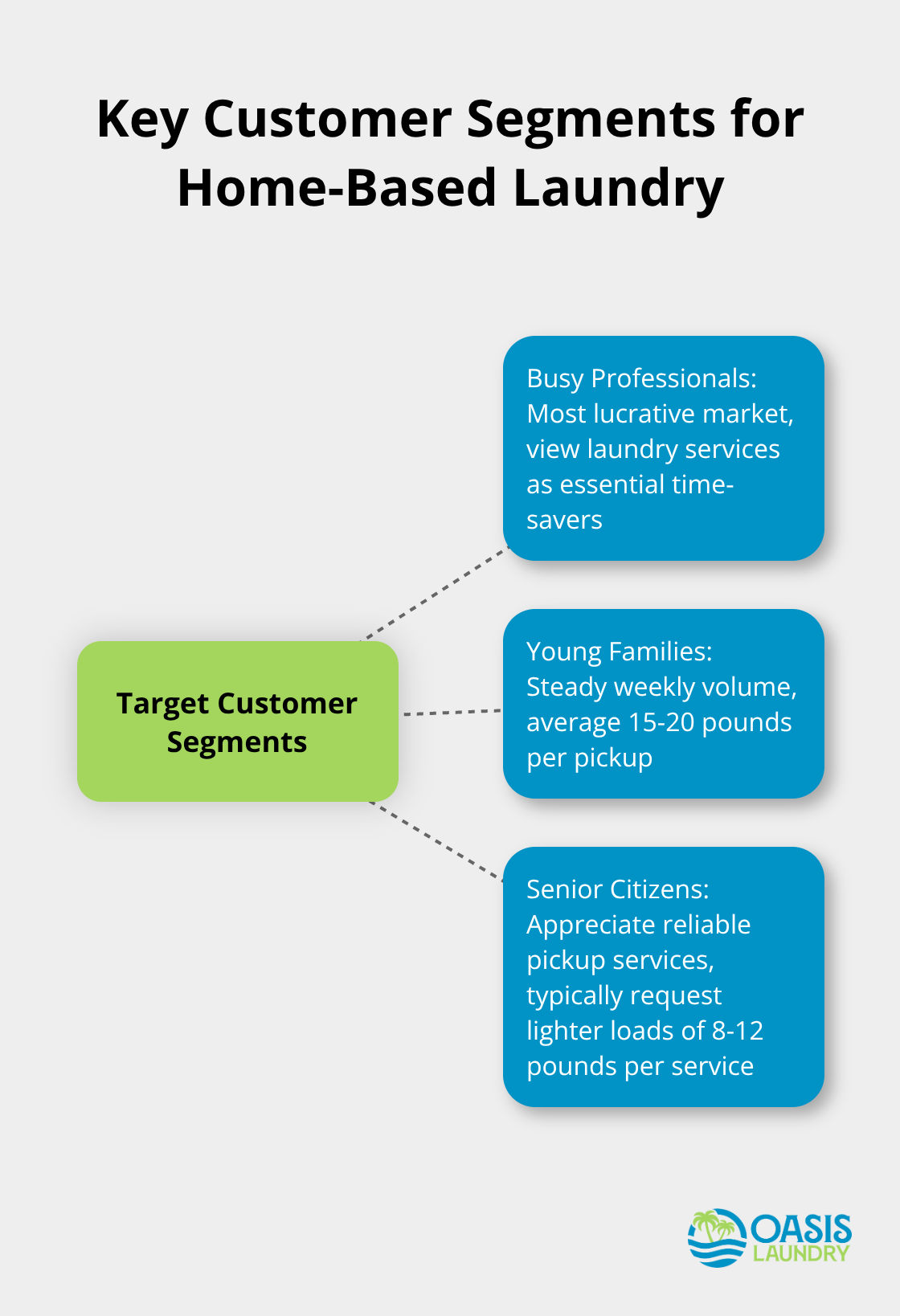
Target High-Value Local Markets
Focus your efforts within a 3-mile radius of your home, as delivery costs become unprofitable beyond this distance for most operators. Canvas apartment complexes with 50+ units, as residents lack in-unit laundry and pay 40% higher rates than single-family homeowners. Partner with local gyms, yoga studios, and fitness centers to offer member discounts, since active individuals generate consistent athletic wear needs. Contact property management companies that oversee multiple rental properties, as they often need reliable laundry services for tenant turnover and can provide bulk contract opportunities worth $500-1,000 monthly.
Price Competitively and Build Loyalty
Set your per-pound rate at $1.25-1.75 based on local market research and position yourself 10-15% below established competitors while you maintain profitability margins above 45%. Offer subscription plans at $89 monthly for unlimited pickup and delivery within your service area, which generates predictable revenue and increases customer lifetime value by 300% compared to per-order rates. Create referral incentives that give existing customers $10 credit for each new customer they bring, as word-of-mouth generates 80% more qualified leads than digital ads for home-based services.
Implement Customer Retention Strategies
Develop a loyalty program where customers earn free services after 10 paid orders (this increases retention rates by 65% and encourages larger order sizes). Send text message confirmations for pickup and delivery times to reduce missed appointments and improve customer satisfaction scores. Track customer preferences for detergent types, folding styles, and special instructions in a simple spreadsheet or customer management system. Respond to complaints within 24 hours and offer immediate solutions like re-washing items or service credits to maintain positive relationships.
Final Thoughts
Your wash and fold business from home demands systematic execution across legal compliance, equipment investment, and customer acquisition. Complete business registration and insurance setup first, then invest in commercial-grade equipment that handles daily volume without frequent repairs. Focus marketing efforts on busy professionals and young families within a 3-mile radius for maximum profitability.
Equipment breakdowns, seasonal demand fluctuations, and customer complaints about damaged items present common challenges. Combat these issues with extended warranties, cash reserves for slow periods, and detailed customer preference records. Most operators struggle with initial pricing, but quarterly cost tracking and rate adjustments maintain healthy profit margins (typically 45% or higher).
Growth opportunities emerge after six months of consistent operation. Consider expanded service areas, commercial clients like salons or gyms, or partnerships with established services. Oasis Laundry demonstrates how professional laundry operations scale through specialized services and customer relationships that support future expansion into commercial facilities.
